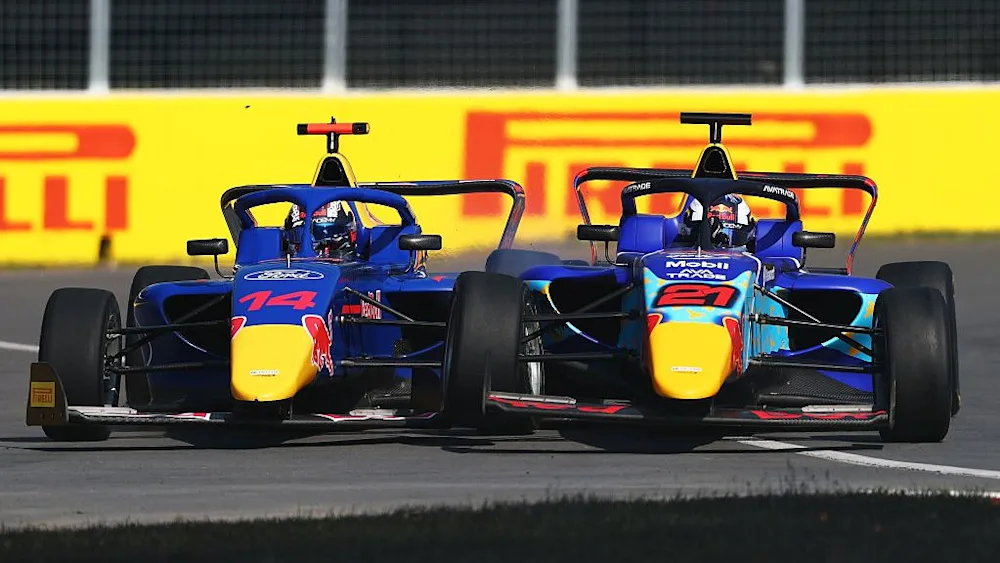Are the Outcomes of F1 Races Solely Down to the Drivers?
- Jess Hayden

- Aug 11, 2023
- 4 min read
Written by Jess Hayden, Edited by Sharifah Zaqreeztrina
Over the past 73 years of Formula One, we have seen many drivers come and go, some collecting countless trophies along the way and others only very few points. However, is the succession of the greats down solely to the drivers or are there other elements that deserve some of the credit? There are many factors that may affect how a driver in Formula One performs. From pressure to track conditions, we'll be exploring the numerous components affecting performance of a driver and which may be the most crucial.
There are a variety of influencing factors on driver performance, but have you thought about the consequence a slow pitstop can have on a race result? Or the benefit of a fast pitstop? If a driver comes into the pits and their mechanics either aren’t ready for them or something goes wrong when changing tires, this would make their pitstop leisurely slower. As a result, that driver may drop multiple places and lose their pace. This was seen at the 2022 Monaco Grand Prix, where Ferrari driver Charles Leclerc was leading the race confidently in a strong position when his team made the mistake of double stacking both Ferrari cars, causing Leclerc to lose his lead in the race. However, if a pitstop is successful and there’s a short time taken, it may not necessarily have an effect on their race position, which is commonly seen in the 2023 race season whenever Max Verstappen pits. This shows the huge influence pit stops have on the results.

Formula One drivers deal with a large amount of stress and pressure from several different areas within their roles. For one thing, team principals place stress on drivers to keep up with a specific level of performance. This may be if a driver’s progress is significantly behind their teammate’s or behind where they were supposed to be at a certain part of the racing season. This may perhaps affect performance as stress can cause bodily reactions such as sweaty palms, an increased heart rate and muscle tension which could affect the drivers’ ability to control the car. Stress may also be caused from within the car due to the temperature. If the temperature in the car is high, it can lead to heat stress or dehydration. A driver generally loses up to 3 kilograms of body weight through sweat during a hot race, where stress levels are more likely to increase. The expectations of matching the performance of a team mate can also put the driver under a high level of pressure. For example, many of the second drivers for Red Bull Racing that struggled to keep up with the pace of Max Verstappen and were therefore replaced rapidly. This can leave a huge dent in the confidence of young drivers, affecting future performances.
Another factor that impacts the performance of a driver is the car they are operating. If the car is underperforming or can’t match the pace of other drivers, this could dramatically affect the outcome of the driver. During free practice, qualifying or the sprint sessions, if a driver crashes and causes damage to the car, it could change their outcome on Sunday’s race. Mechanics may not have the time to finish working on the car before the race if severe car damage occurs. Additionally, between qualifying and the Sunday race a team could notice an area for improvement in the car which would not be allowed to be made, if the team did decide to make this change they would receive a penalty of some sort. For example, at the 2023 Belgian Grand Prix, Max Verstappen received a five-place grid penalty for fitting a new gearbox.

A typical cause of decreasing speed is crashes, as well as getting caught up behind a crash. At the 2023 Hungarian Grand Prix, Alpha Tauri driver Daniel Ricciardo got caught up behind the collision of the two Alpine’s which slowed his momentum down greatly. Evidently, collisions could result in damage to the car, taking a driver out of the race. However, being caught behind a crash also has a great negative effect, the drivers can lose pace and end up being driven off track with, which was seen at the 2023 Australian Grand Prix.
Weather conditions can be totally unpredictable, especially on tracks like Spa-Francorchamps. Usually, when weather on track is bad, either wet weather tyres or intermediates are used. Although, on some tracks they wouldn’t be prepared for using other tyres, like softs, during the race if the weather conditions have been bad all weekend. This is evident at the 2023 Belgian Grand Prix. The track temperature also influences driver performance as it impacts the tyre pressure degradation rate and the grip level. Tyres in Formula One have a small window to operate, hence missing this window by a change of a few degrees can set a driver back to a tenth of a second in their lap time.

Although the situations previously discussed appear promising, the drivers own abilities are undeniably a great contributing factor on delivering results and performance. From the actions of competitors to a mechanical malfunction, Formula One drivers are required to react quickly to a multitude of different scenarios.They also need to be constantly on top of everything in case of a swift change, which isn't uncommon for the motorsport series. Having both mental and physical strength are highly important for these drivers, as they need to be able to withstand extreme temperatures and forces they may experience from the car while driving. This includes a high degree of endurance and focus to control the car at dangerous speeds.
To conclude, there are a wide range of effects that determine a driver's performance, which shows that race results are made from more than just the skills of the driver. What do you think is the biggest influence on a driver’s performance? Let us know in the comments below!










Comments